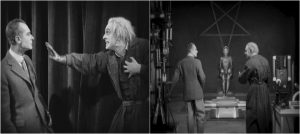Eggs and Aliens (2018)
This text was adapted to be part of a performance that happened as part of Alchemy: The Curios Society at Whitechapel Gallery in 2018. The text was read by Fiona, the digital Scottish Female voice found in Word, slowed down as far as she goes. Prof. Robert Williams progressed the slides on Fiona’s command. Robert and Dr Kate Briggs also presented at this event which I missed due to being snowed in, in a Greggs in Glasgow: https://www.whitechapelgallery.org/events/the-curios-society-alchemy/

I’m very sorry to be unable to join you this afternoon, but I hope my digital voice and these images will suffice.
When Robert asked me to write a short talk on alchemy and film, I imagined writing a brief history, maybe starting with Metropolis or The Cabinet of Dr Caligari, mentioning Parajanov’s Colour of Pomegranates and the psychedelic visions of Jodorowsky’s The Holy Mountain. But once I started looking for alchemy, I began to see evidence of it everywhere. Alchemy can be thought of as a proto-science or a pseudo-science, as chemistry, as poetry or analogy. It uses classical symbolism which permeates Western visual language. If you want to find the language of alchemy, you can find it everywhere and anywhere.
So instead, this is an entirely subjective look at alchemy, from the first alchemist to alien abduction, via a mad scientist, two linguist spacewomen and a picnic – using some key tools of the alchemist…
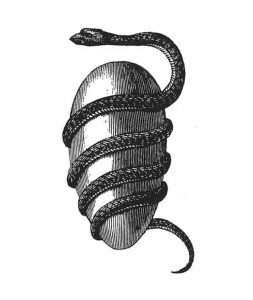
Tool Number 1 – Symbolism – for instance, here is the Orphic Egg – the cosmic egg from which hatched the primordial hermaphrodite. Jung interpreted the egg not just a cosmic symbol but also a “philosophical one”. As the former it is the Orphic Egg, the world’s beginning; as the latter, the philosophical egg of the medieval natural philosophers, ‘the vessel from which […] the homunculus emerges… the spiritual, inner, and complete man.’
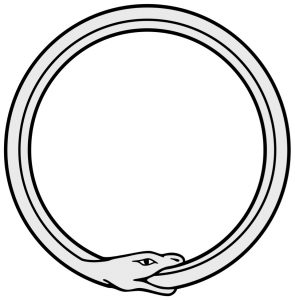
Or here, the ouroboros – an ancient symbol depicting a serpent or dragon eating its own tail. Originating in ancient Egyptian iconography, the ouroboros entered western visual language via Greek magical tradition and was adopted as a symbol by alchemists. It is often taken to symbolize introspection, the eternal return or a cycle, especially in the sense of something constantly re-creating itself.
Creation and birth. Death and re-birth.
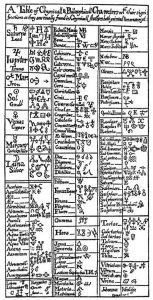
A table of alchemical symbols from Basil Valentine‘s The Last Will and Testament, 1670
Tool Number 2 – Codes – the language of alchemical texts was written to deliberately cause obstruction and confusion – necessitating translation. And where there is translation there are opportunities, gaps to be filled by the translator. Towards their own ends.
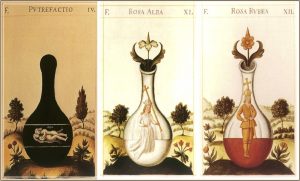
And tool number 3 – the Magnum opus, or the great work – the search, via experimentation, for the philosopher’s stone. This process involves the transformation of lead (or other base metal) into gold – a supposed purification process which, if one thinks of alchemy as a fundamentally spiritual rather than chemical process, is analogous to, or may be used to bring about, the purification of the soul – offering eternal life.
The Magnum Opus is often described as a series of three stages, each represented by a colour: a blackening, a whitening, And finally, rubedo, a reddening.
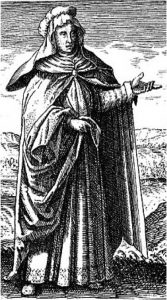
Mary the Prophetess – the first alchemist. She lived between the first and third centuries A.D and is said to have discovered hydrochloric acid, though this is not accepted by most science textbooks. Mary is also credited as having invented key bits of alchemical kit, some of which are still used in laboratories, such as a three-armed beaker, an extractor and, bearing her name still, the bain-marie – the water bath.
Of course, Mary is not the alchemist typically represented in popular culture.
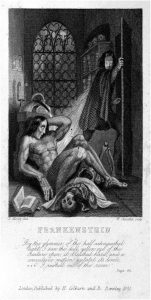
More familiar is Mary Wollstonecraft Shelley’s Dr Victor Frankenstein (published in 1818, when Mary was 20) – A character who trained in both alchemy and modern science, he represents a bridge between the two disciplines.
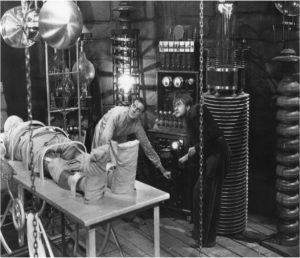
Of course, Wollstonecraft Shelley’s Frankenstein, though a relatively sympathetic character, kicked off a now familiar fictional trope – that of the mad scientist, for whom often reanimation or rebirth are goals.
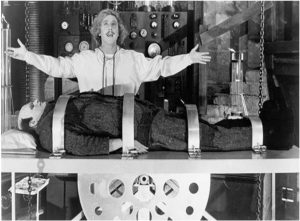
Driven by ego and the desire to play god, the mad scientist, even when played for laughs, warns of the dangers of messing with nature.
In Lang’s Metropolis, ‘mad’ scientist Rotwang succeeds in making the Maschinenmensch, a female automaton, who is both alive and dead. His lab looks like that of the alchemist & natural scientist Frankenstein, and like Frankenstein, he is destroyed at the end of the narrative.
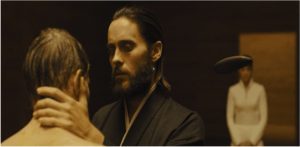
In Denis Villeneuve’s Blade Runner 2049, the character of Niander Wallace can create new life both digitally and biologically, and is hardly less theatrical in his performance than previous depictions of mad-scientists. Wallace, like others before him, is thwarted in his ambitions by his inability to crack biological reproduction – his products are, supposedly, sterile.
Reanimation, birth and rebirth are obsessions for male mad-scientists and are reminiscent of alchemists search for the elixir of life, the philosopher’s stone.
But what of the female mad scientist?
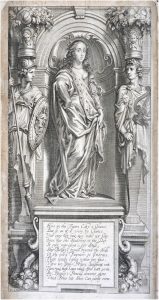
An early scientist, certainly considered mad by her contemporaries, was Margaret Cavendish, the Duchess of Newcastle. She was the first woman to attend a meeting of the Royal Society, in May 1667. On the occasion of her visit, she witnessed several experiments of “colours, loadstones, microscopes” and was “full of admiration”, although according to Pepys, her dress was “so antic and her deportment so unordinary” that the fellows were made strangely uneasy.
Margaret mocked the dry, empirical approach of the fellows, attacked the practice of vivisection and wondered what rational explanation could be given for women’s exclusion from learned bodies. She questioned the Baconian notion of relentless mechanical progress, in favour of gentler Stoic doctrines, in her Observations on Experimental Philosophy (1668). She wrote a Memoir, in which she defined poetry as “mental spinning”, extremely useful to the scientific mind….

She also produced arguably the first-ever science-fiction story, The Blazing World (1666), which considered the alternative futures of science.
And for her trouble, she was given the nickname “Mad Madge”.”
In The Blazing World, Cavendish uses another world to allow for imaginative development of scientific thinking, current in the 17th century. 300 years later, in 1962, Scottish writer and socialist Naomi Mitchison, published Memoirs of a Spacewoman, in which the titular female astronaut, an expert in communication and linguistics, visits other worlds and communicates with beings, in order that Mitchison might foreground scientific, societal & philosophical problems of the 1960s.
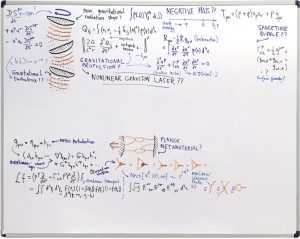
https://io9.gizmodo.com/5794436/from-alexander-pope-to-splice-a-short-history-of-the-female-mad-scientist
The first female mad scientist in literature is Mathésis. ‘Mathésis’ is the ancient Greek term for learning/mathematics/knowledge/science, and she appears in Alexander Pope’s satire “The Dunciad” (1728)
In Christopher Smart’s “The Temple of Dulness” (1745), Mathésis is a sinister figure:
Next to her, mad Ma-thesis; her feet all bare,
Ungirt, untrimm’d, with loose neglected hair;
No foreign object can her thoughts disjoint;
Reclin’d she sits, and ponders o’er a point
Before her, lo! inscrib’d upon the ground
Strange diagrams th’astonish’d sight confound,
Right lines and curves, with figures square and round.
With these the monster, arrogant and vain,
Boasts that she can all mysteries explain,
And treats the sacred sisters with disdain, […]
Here, Mathésis is the mad mathematician, the witch or even a forerunner of The Madwoman in the Attic. Mathésis is a “monster, arrogant and vain.” who creates “trifling trinkets” – similar to Frankenstein’s monster or Wallace’s replicant.
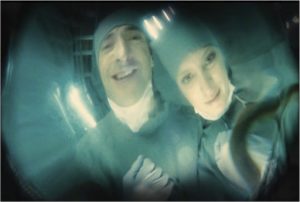
My favourite female ‘mad’ scientist is Elsa, played by Sarah Polley, in Vinchenzo Natali’s Splice (2009). Splice focuses on a couple of super-cool geek scientists (they’ve been interviewed for Wired) – Elsa and Clive (Adrien Brody), who, kind of accidentally, create a human/non-human animal hybrid which they raise as if their own child.
The film’s relationship to previous mad scientists is made clear – Elsa & Clive are named as an homage to Bride of Frankenstein (1935), in which Colin Clive played Dr. Frankenstein and Elsa Lanchester played Mary Shelley/The Bride), In Splice, it is Elsa who utters the infamous words ‘It’s alive!” – identifying her character as the madder of the two scientists.

The language of the film is the language of the biological laboratory – the genetic code and technology – barely translated for the viewer and delivered as fast-paced jargon reminiscent of screwball, battle of the sexes comedies made in the 1930s and 40s, such as Bringing Up Baby.

Emphasising the ‘madness’ and ego of Elsa is an early scene in which she appears ambivalent towards having a ‘real’ child, as pregnancy would interrupt her already stellar career and because she appears squeamish at the thought of her own biological pregnancy – a reference to horror moments in Alien and much of Cronenberg’s work.
In an attempt to procreate outside of her body, Elsa merges her genetic material with the genetic material of various animals and creates her own monster/child.
A hermaphroditic homunculus, straight from a mechanical Orphic Egg.
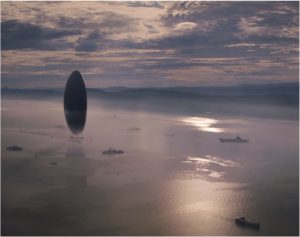
The appearance of 12 ‘eggs’ on Earth, heralds a new age of universal communication in Denis Villeneuve’s 2016 first contact film Arrival.
These shapes, which are egg-like on one hemisphere and concave on the reverse, appear to be spaceships but are maybe more akin to holes in space and time. Within these structures, there is a membrane or screen, upon which radial aliens (beings with seven points, named heptapods) attempt to communicate with Amy Adam’s communication expert and linguist Louise, using a series of complex circular symbols, apparently made of inky black smoke.
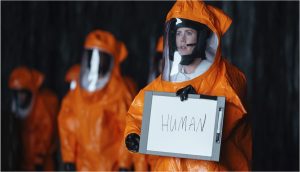
Early attempts at spoken and written communication between Louise and the aliens are somewhat ludicrous, but once the spacesuit is off…
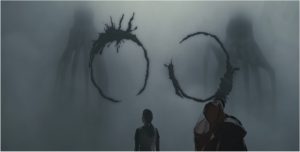
…the squid-like beings begin to make circular shapes, like coffee stains, or the ouroboros, on the membrane. Theirs is a non-linear autography, and the humans wonder if the beings might also think in this circular way.
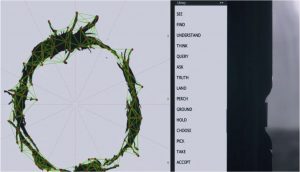
Each circle must be decoded, as every curl and splat are part of a nuanced and detailed language. A little like logograms (where individual images represent a word or a phrase) or like the mechanism of gene expression (in which sections of DNA are transcribed, translated and translocated into protein product) and which can be turned off an on, these circular patterns can be interpreted in multiple ways, echoing the mutable meanings of alchemical language and imagery.

Eventually, Louise is able to communicate with the aliens in their own language, but this starts to affect the way that Louise thinks. The circular communications, based on the seven-pointed radial shape, which influence their experience of their environment, and also, as it turns out, their experience of time, has a similar effect on Louise, who starts to experience her life in a non-linear way. She sees the future, the past and the present in the wrong order, or perhaps simultaneously.
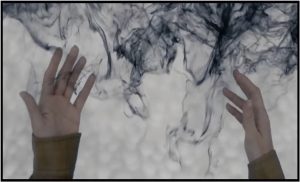
It’s acknowledged that Arrival is based on Ted Chiang’s 2002 first-person short story, Story of Your Life. In it, Chiang uses different tenses, mixing future, past and present to weave the complex non-linear knot of Louise’s life in a way that is reminiscent of Billy Pilgrim in Vonnegut’s Slaughterhouse-Five.
But no one has yet made clear the debt that Chiang’s premise appears to owe to Naomi Mitchison’s 1962 novel Memoirs of a Spacewoman.

In Memoirs of a Spacewoman, Mitchison’s astronaut is, like Louise, an expert in communication, travelling on quests to make contact with other conscious lifeforms. On her first mission she observes, lives amongst and communicates with a group of five-pointed radial creatures, and discovers that their body shape influences the way they think:
“One is so used to a two-sided brain, two eyes, two ears, and so on that one takes the whole thing and all that stems from it for granted. Incorrectly, but inevitably. My radiates had an entirely different outlook. […] they never thought in terms of either-or. It began to seem very peculiar that I should do so myself, and that so many of my judgements were paired: good and evil, black or white, to be or not to be.”
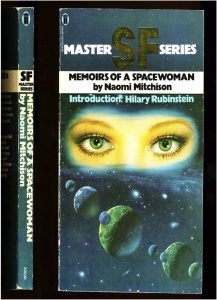
Over time, the spacewoman becomes less able to think in binaries or make distinctions or decisions. In fact she feels the need to do so less and less. She feels herself merging in an all-sided relationship with the alien beings and notices that previous problems appear to be solving themselves. However this new way of thinking starts to erode what she understood as her personality, and her ability to think, as she describes, ‘rationally’ – a problem for this scientist By the time she returns to her spaceship, she is unable ‘to get back’ to herself, to say yes or no. She is unable to speak.
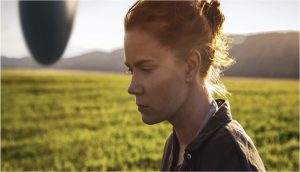
The egg-like craft in Arrival are reminiscent of other fictional monolithic structures which appear to alter conventions of space and time…

The landscape of Joan Lindsay’s Picnic at Hanging Rock, for instance.
The novel focuses on a group of female students at an Australian girls’ boarding school who inexplicably vanish at Hanging Rock while on a picnic. The events depicted in the novel are entirely fictional, but it is framed as though it is a true story, corroborated by ambiguous pseudo-historical references.
Published in 1967, and translated into Peter Weir’s film version in 1975, there is something fundamentally alchemical about Lindsay’s and Weir’s narrative and imagery.

Here, Hanging Rock is the alchemist’s ancient base metal which may be transformed or purified.
Or perhaps Hanging Rock acts as the universal solvent – a catalyst for a change of state for itself and those who climb it.
It is also the Orphic Egg – having witnessed the birth of civilization, of the Aboriginal people.
And it is the ouroboros, as on the rock on St. Valentines day, time appears to eat its own tail:
“It is happening now. As it has been happening ever since Edith Horton ran stumbling and screaming towards the plain. As it will go on happening until the end of time. The scene is never varied by so much as the falling of a leaf or the flight of a bird. To the four people on the Rock it is always acted out in the tepid twilight of a present without a past. Their joys and agonies are forever new.’ (from the excised Chapter 18, published on Lindsay’s death with her permission).
The rock is the site of alchemical process, and the arrival of the picnickers marks the red phase, the rubedo, the final phase of the magnum opus, resulting in the philosopher’s stone and eternal life.
Hanging Rock has, as one of the schoolgirls exclaims in Weir’s film, ‘waited a million years – just for us!’ – perfectly encapsulating a colonial attitude to the Australian landscape.
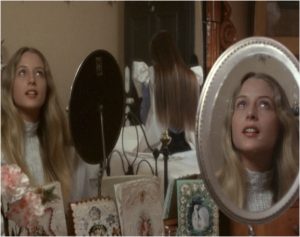
The egg-shape is used throughout the novel and Weir’s film, here framing and reflecting Miranda, who will never return from Hanging Rock.

And seen later, as she is remembered by her adoring friend, placed in an egg-shaped frame – as if still forming, ready to be re-birthed…
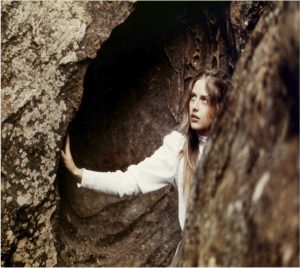
The narrative is littered with symbolic colours and animals, particularly when set on the rock.. As they climb, the rock itself becomes changeable and labyrinthine, as if regressing into its former liquid state. Like the Overlook Hotel in Kubrick’s The Shining, it is repetitious and impossible to map.,
“On the steep southern façade the play of golden light and deep violet shade revealed the intricate construction of long vertical slabs; some smooth as giant tombstones, others grooved and fluted by prehistoric architecture of wind and water, ice and fire. Huge boulders, originally spewed red hot from the boiling bowels of the earth, now come to rest, cooled and rounded in forest shade.”,
“Miranda was the first to see the monolith rising up ahead, a single monstrous egg perched above a precipitous drop to the plain.”
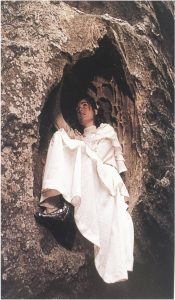
Animals associate with the girls – an eagle, bronze beetles and a snake – indicating that they are becoming closer to nature as they climb, transforming.
On the rock, the novel’s text evokes the equipment of the laboratory – the copper coil and the stereoscopic clarity of a powerful telescope – as if the schoolgirls have unknowingly become part of an experiment…
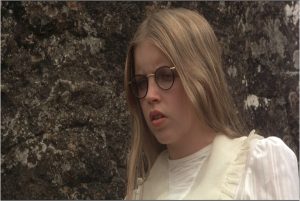
As they climb, Marion looks down at the rest of the picnic party below, and wonders, as if speaking as an observer of something she no longer recognises:
‘A surprising number of human beings are without purpose. Although it’s possible, of course, that they performing some necessary function unknown to themselves.’
A little earlier, ‘Peering down between the boulders, Irma could see the glint of water and tiny figures, coming and going, through drifts of rosy smoke or mist’.

Irma continues the reddening of the narrative – spotting the scarlet flash of a parrot’s wing. She recalls that her ‘Papa made a million out of a mine once […] He bought mama a ruby ring.’
Irma will go missing for a week on the rock, but she returns.
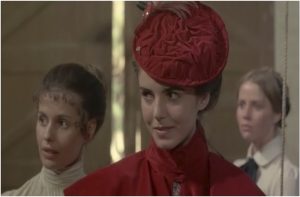
A student from a wealthy family, she is perhaps too connected to the material world to enable her to ’disappear’ on the rock. She returns, resurrected, and wearing red, as if the final element of the magnum opus, transformed into a woman. The other students, in their white calico dresses, turn on her having, quite reasonably, remained children in the week that she was missing.
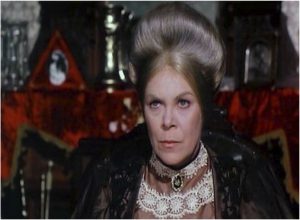
Back at Appleyard College, headmistress Miss Appleyard is driven to drink, as the scandal of the missing students destroys her school’s reputation. She reminisces of seaside holidays in Bournemouth, a place she loves because ‘it never changed, not in 40 years.’ Miss Appleyard is framed in black, white and red, signalling the stages of the magnum opus, and yet she is the antithesis of the alchemist’s desire for transformation. Unable to adapt to the changing landscape, in every sense, she has to die.

The observation made through the rosy smoke, or mist, has been interpreted by some as indicative of the presence of aliens. In addition to the rosy smoke, the shape of the monolith is similar to that of a spaceship or UFO, described in accounts of alien abduction. Accounts of alien abduction often involve gaps in the abductee’s experience of time, and time is played around with throughout both the novel and Weir’s film version of Picnic at Hanging Rock.
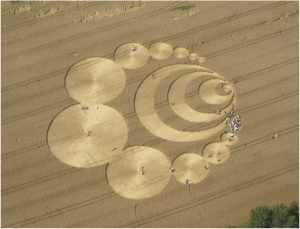
Alchemical-like codes and symbols are frequently interpreted as evidence of alien contact by new-age pseudo-scientists, and are often proposed in conjunction with the merest wisps of scientific fact.
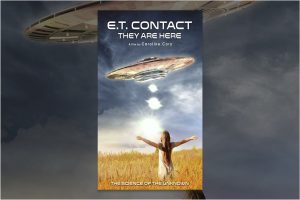
The net is littered with conspiracy theories and documentary-like videos, like this one, which attempts to link accounts of extraterrestrial abduction, ‘experiments’ on human DNA (which reveal the code to be a human/alien hybrid) and visual signs, many alchemical in origin.
By conflating the symbols of alchemy and the signs of alien contact, evidence of extraterrestrials can be found everywhere. The utilization of pseudo-scientific language, reminiscent of the proto-scientific codes of the alchemist, is evidence of no more than the continued ubiquity and mutability of the alchemist’s language and the very human desires to find evidence, to seek order and in so doing, to be understood and to understand.
Thank you.
